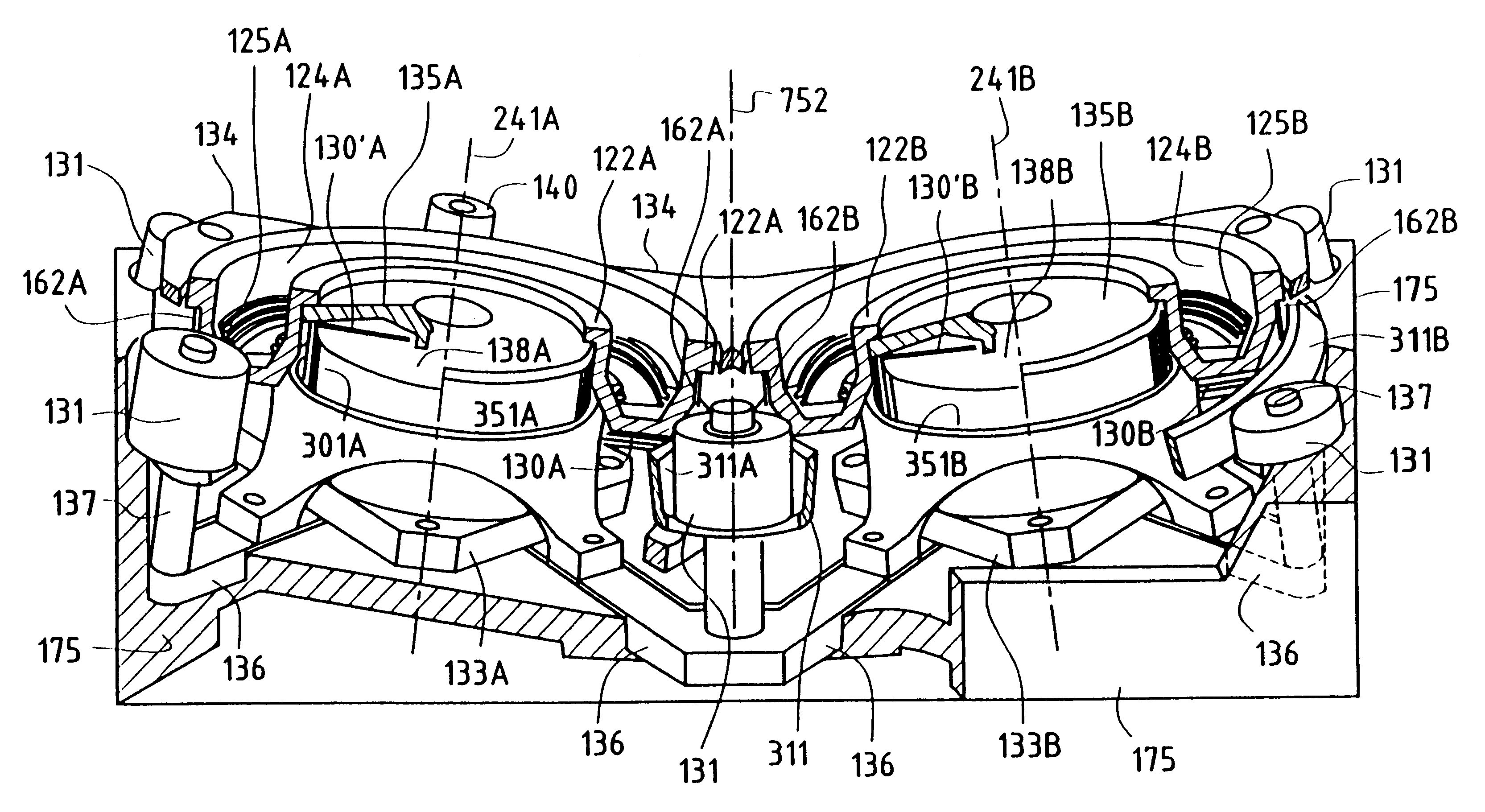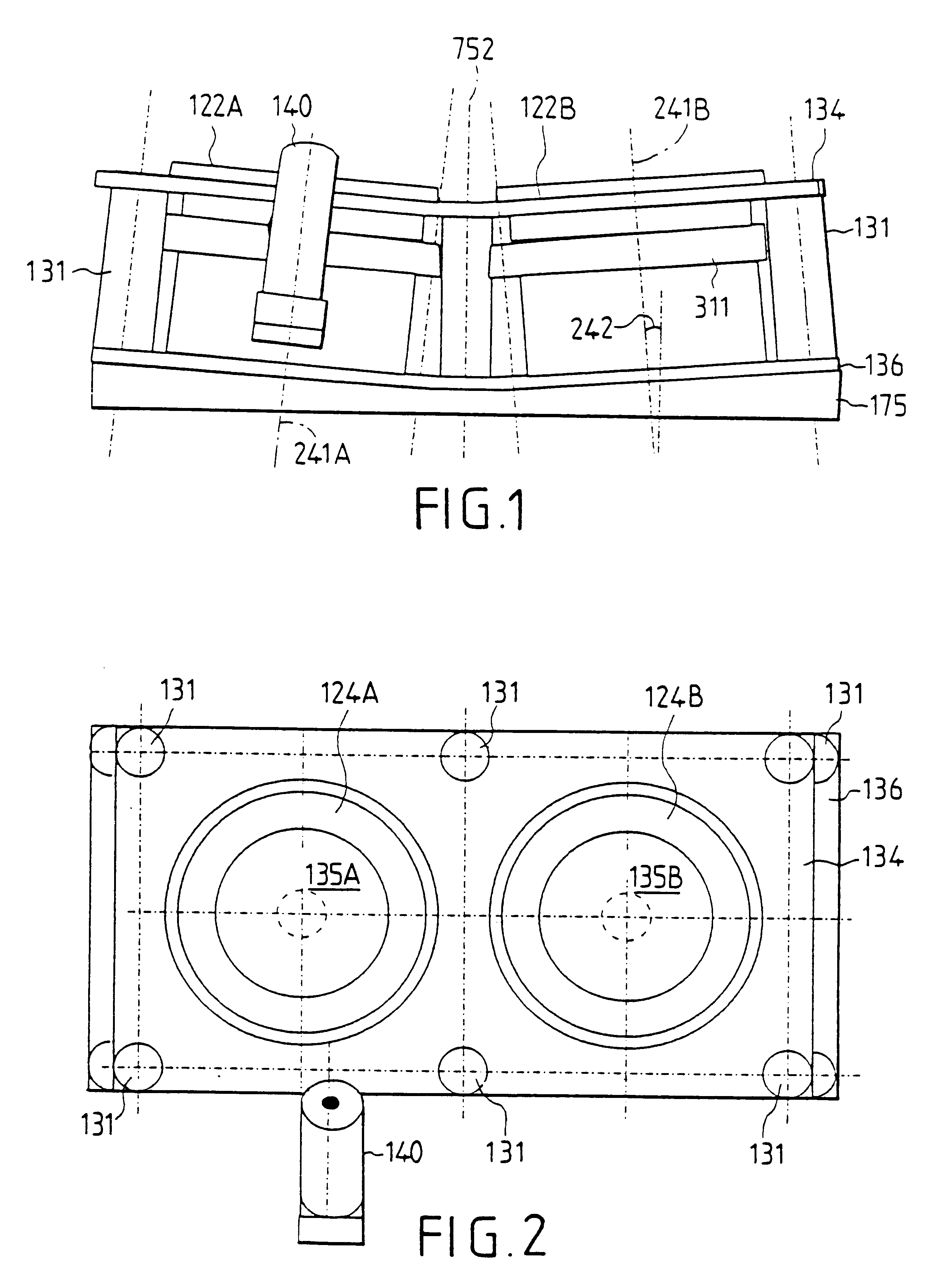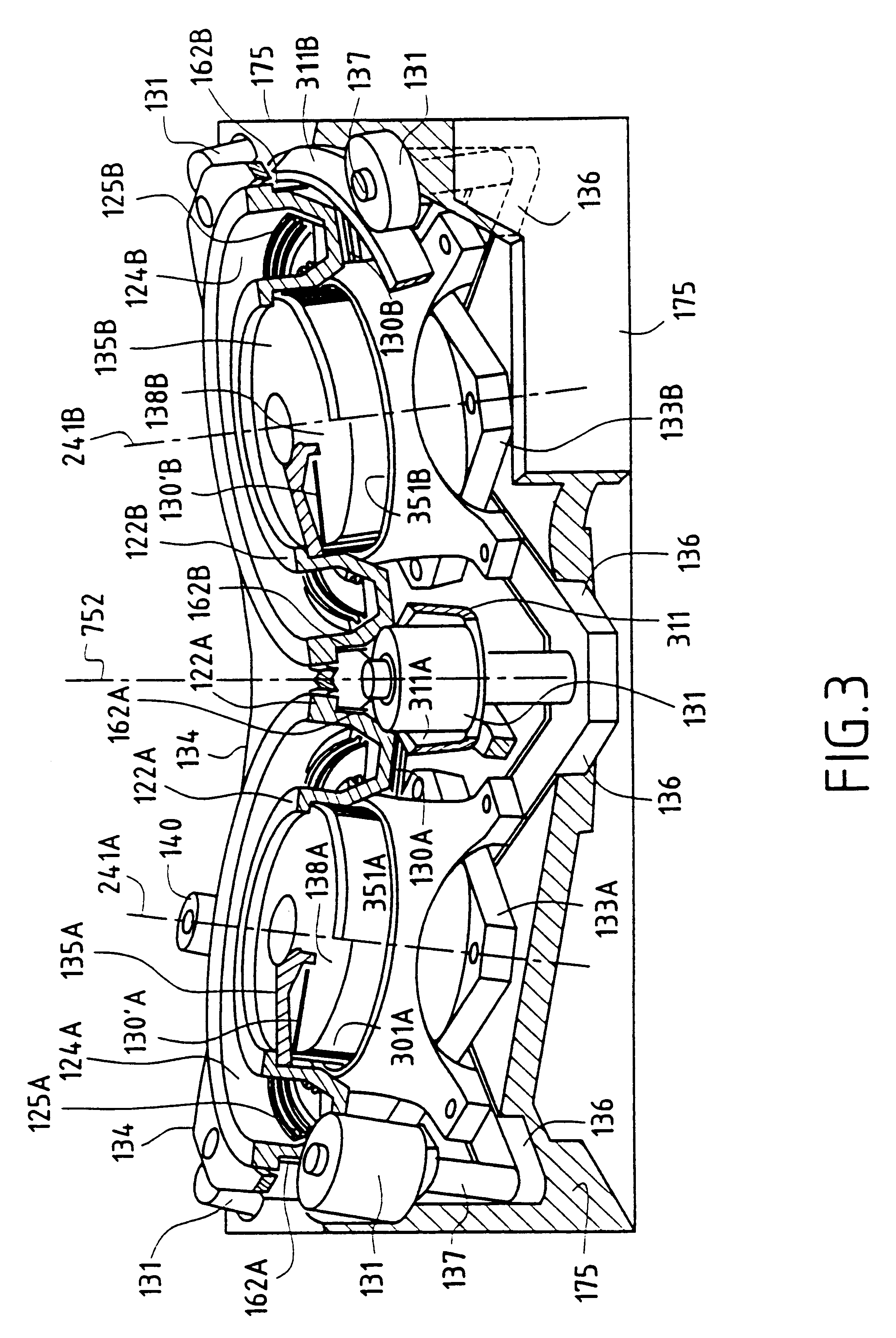Closed electron drift plasma thruster with a steerable thrust vector
a plasma thruster and electron drift technology, applied in plasma, electrical equipment, plasma technique, etc., can solve the problems of not using industrial embodiments using that type of technique, not using industrial embodiments, and not increasing etc., to achieve easy and effective control of the thrust vector, increase the cost or overall on-board mass, and the effect of increasing the cos
- Summary
- Abstract
- Description
- Claims
- Application Information
AI Technical Summary
Benefits of technology
Problems solved by technology
Method used
Image
Examples
Embodiment Construction
In the following description of various embodiments of closed electron drift plasma thrusters provided with respective pluralities of main annular ionization and acceleration channels, items that are similar in the various main annular channels or that are associated with the various different channels are given the same references, but followed by a letter A, B, C, or D depending on whether reference is being made to a first, a second, a third, or a fourth annular channel of a single thruster.
FIGS. 1 to 3 show a plasma thruster having two main annular channels 124A and 124B disposed side by side and defining a configuration that is essentially rectangular. The axes 241A and 241B of the two channels 124A and 124B are inclined at an angle 242 relative to the geometrical axis 752 of the thruster. A single hollow cathode 140 is associated with the two main channels 124A and 124B.
A conventional plasma thruster having a single main annular channel, of the kind shown in FIG. 16, includes,...
PUM
 Login to View More
Login to View More Abstract
Description
Claims
Application Information
 Login to View More
Login to View More - R&D
- Intellectual Property
- Life Sciences
- Materials
- Tech Scout
- Unparalleled Data Quality
- Higher Quality Content
- 60% Fewer Hallucinations
Browse by: Latest US Patents, China's latest patents, Technical Efficacy Thesaurus, Application Domain, Technology Topic, Popular Technical Reports.
© 2025 PatSnap. All rights reserved.Legal|Privacy policy|Modern Slavery Act Transparency Statement|Sitemap|About US| Contact US: help@patsnap.com



